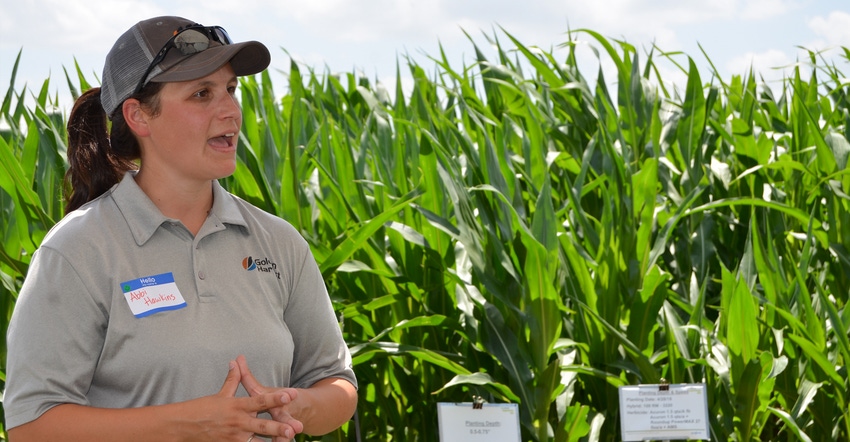
Getting a corn plant off to the best possible start as soon as it leaves the bag is the goal of every farmer. But one thing Abbi Hawkins finds works against the kernel is planting depth.
Hawkins, a Golden Harvest sales representative, says planting corn seed too shallow or too deep can result in uneven stands.

DEPTH MATTERS: Root growth is critical for a solid corn stand. A farmer assesses the root mass of a corn plant planted at a shallow depth during the Syngenta Grow More Experience field day. The company completes research trials on planting depth and provides farmers the opportunity to see the results up close.

She says farmers should aim for 2 inches — and offers five reasons to back it up.
1. Better standability in root structure. At the 2-inch depth, the seed is able to produce more nodal roots in the soil. More roots provide better stability in a wind event.
2. Better uptake. Roots at this depth have access to moisture and nutrients. The large root mass provides better uptake of both.
3. Stable growing environment. There is temperature and moisture stability at 2 inches. Above that mark the soil heats up, drying out the soil around it and restricting moisture access. Below that mark the soil may be too cool or wet, resulting in loss of vigor and germination issues. This is more important early, when farmers are trying to get the seed off to a good start, she says, and when temperature and rain can be more unpredictable.
4. Staying out of the chemical-saturated zone. This year young seedlings placed shallower than 2 inches were sitting in a layer of chemicals, she says. The lack of moisture did not allow the chemical to move through the soil. “If it is up at 1½- or ¾-inch depth, it is dealing with highly concentrated chemical zone,” she explains. “Those little roots are developing, and sometimes it is just enough to actually kill off roots.” There is seed protection at 2 inches.
5. Emergence pattern. Shallow plants at ½ inch or ¾ inch, came up first in Hawkins’ plot. However, they did not emerge all at once. “They were too busy competing with each other to get out of the ground and then outgrow one another,” she says. Some seeds made it, while others lagged. Those seeds planted deeper at 2 inches came up just eight hours later; however, they emerged evenly. “We got that picket-fence, uniform pattern,” she says. Ultimately, those planted at more shallow depths did not fully emerge until after the 2-inch-planted seeds.
Hawkins says farmers should make sure they check planting depth every year. “Pay attention to down pressure when planting,” she adds. “Get off the tractor and check. It can affect just how well your seed performs.”
About the Author(s)
You May Also Like






